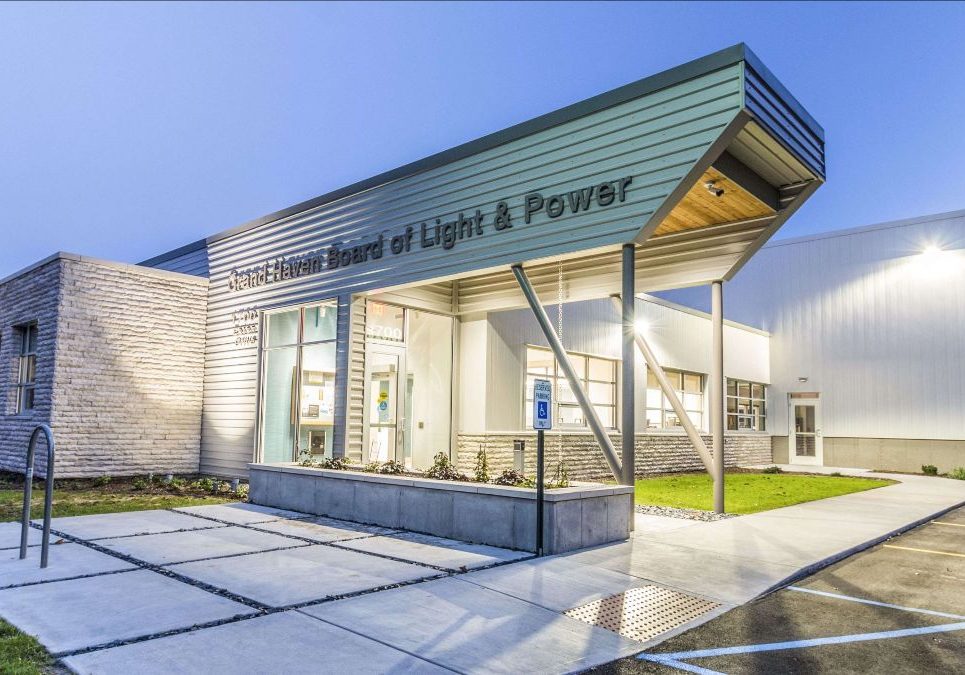Grand Haven Board of Light and Power (GHBLP) officials have discovered regulated PFAS and other chemical contamination at the former J.B. Sims site on Harbor Island. GHBLP staff reported these findings to the board and the public on Thursday night. PFAS was identified through additional contamination sampling conducted in preparation for further closure work of the site’s defined coal ash impoundments. This sampling was conducted by the BLP’s sampling and testing firm to determine what type of handling will be required for groundwater that will be pumped at the site during required coal ash remediation efforts.
Erik Booth, BLP Operations & Power Supply Manager stated, “Results of these recent tests received last week confirmed the presence of elevated contaminant levels on the Sims site were above regulatory criteria (in addition to those contaminants already present from the coal ash) for Ammonia and total inorganic nitrogen, Cyanide, Perfluorooctanoic Acid (PFOA), and Perfluorooctanesulfonic Acid (PFOS).”
The test results are available for the public on the BLP’s CCR Rule Compliance Data and Information webpage. This is the first set of tests conducted for chemical constituents unrelated to coal ash. A second set of confirmatory sampling is scheduled within the next 10 days to verify these results. The results of these future confirmation/validation tests will also be made available to the public as soon as possible.
These chemical contaminants have now been detected in the groundwater at the former Sims site, however, the safety of the City’s drinking water supply has not been impacted.
Patrick McGinnis, City Manager stated, “While the City is disappointed to learn of the detection of PFAS compounds under Harbor Island, it is not entirely surprising, considering the historical uses of the site. Throughout the process of demolition on the Sims site, rigorous and regular testing for PFAS and other possible contaminants has confirmed the safety of the drinking water, sanitary discharge, and surface waters. With the support of the Michigan PFAS Action Response Team, Grand Valley State University, Northwest Ottawa Water System, and Grand Haven Spring Lake Sewer Authority, we will continue to monitor and test for any changes, risks, or mitigation measures which may be indicated by this new information.”
The BLP tested for these non-ash related compounds in preparation of potential remedial activities which may include significant dewatering and discharges to the river, to drawdown the groundwater near these waste deposits to facilitate required excavation of coal ash (which could impact or disturb nearby or underlying waste materials disposed of at the site historically). These contamination constituents are not present in the coal ash produced by Sim’s operations which began in the early 1960s.
Following the decision to demolish the former J.B. Sims coal plant at the site, GHBLP has strongly advocated for a holistic approach to remediation at the site because of its known contamination as a former city waste dump.
David Walters, BLP General Manager said, “The BLP has repeatedly stated that we are seeking a compliance strategy that avoids negatively impacting the in-situ materials (both ash and trash) that have been undisturbed in the ground for very long periods of time. The BLP will likely be required by EGLE and/or EPA to conduct some ash removal during site closure activities. The goal of any ash removal plan should be to avoid exacerbation of contaminant levels in the groundwater, or any release of these contaminants to the Grand River from these other materials historically disposed of on the site. Testing of this water needed to be conducted before an effective removal strategy could be developed.”
This new information will be evaluated as part of the ash impoundment closure strategy to be approved and agreed upon by the appropriate environmental regulatory agencies consistent with the future redevelopment plans of the Sims site.


